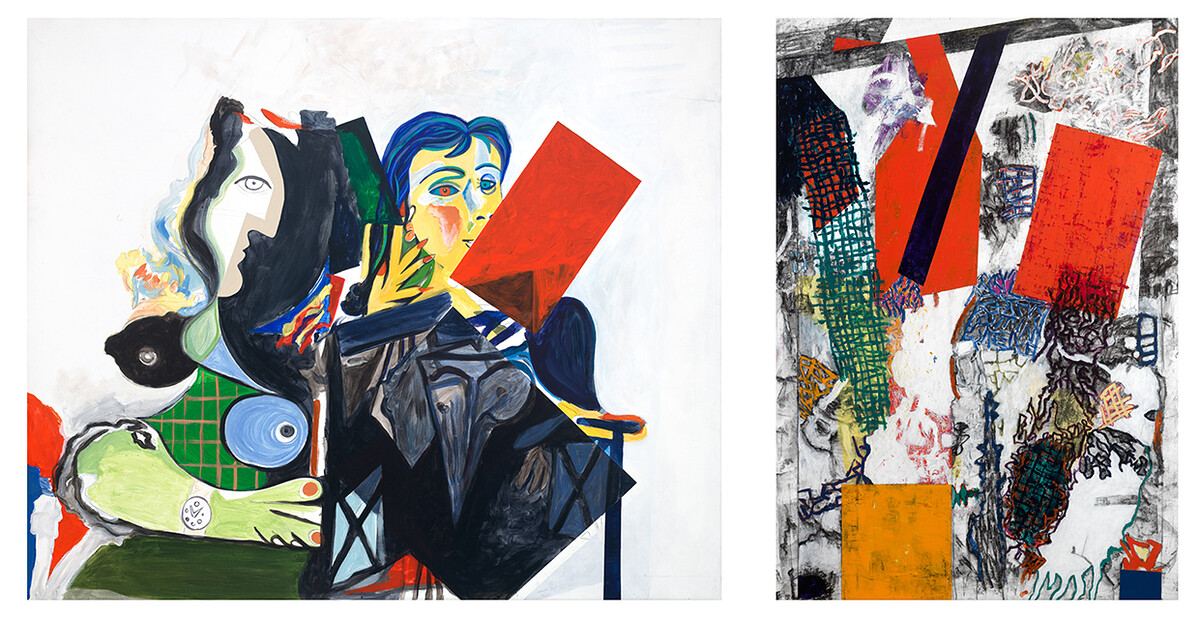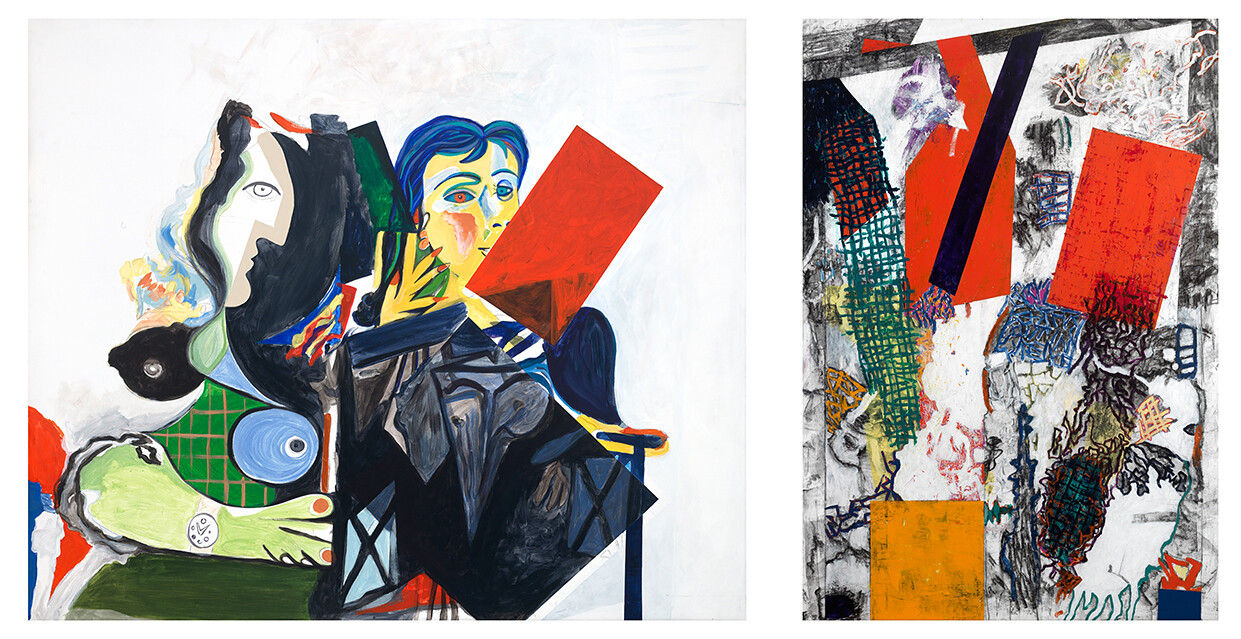September 25–October 25, 2019
125 A Herter Hall University of M
Amherst, MA 01003
USA
The Herter Art Gallery at the University of Massachusetts, Amherst, is honored to inaugurate it’s 50th year on campus with Disruptions & Continuities: Recent Work by George Wardlaw. The significance of this exhibition is many-fold. While also tracing back to work made in the last six years, it presents George Wardlaw’s final series, “Disruptions,” in which he merges imagery from his previous work with Picasso’s paintings of women to confront the latter on his depictions and treatment of women. Due to his increasingly failing health, this body of work was created on an iPad, and then painted on canvas by his studio assistant, Kelsi Giguere, a practicing artist and a recent graduate from the Department of Art at the University. Very quickly, Giguere assumed the role of a collaborator—with Wardlaw giving her the freedom to bring her own decisions and mark-making to the process. Moreover, she became an important participant in the hours of reflection and dialogue that fueled the ideas behind this work. Thereby, what began as an assistantship evolved into a partnership of mutual respect and a mentorship that had a profound impact on both Wardlaw and Giguere. The continuation of this pedagogical aspect appropriately reflects the importance that Wardlaw placed on the lasting influence of his own mentors as well as his long-standing career as an educator, a great portion of which was spent as Chair and Professor in the Department of Art at the University of Massachusetts, Amherst. It is also remarkable that through this mentorship, both Wardlaw’s and Giguere’s history with the Department, one as a teacher and the other as a student, seems to collapse fortuitously. Finally, the timing and location of this show is apt given the indispensable role Wardlaw played during his time as Chair in securing the Herter Art Gallery for the Department of Art—and for the continued benefit of the campus and surrounding community. It seems fitting, then, to celebrate the 50th year of this landmark cultural site with an exhibition of Wardlaw’s work.
Wardlaw, who passed away on July 26 while preparing for this exhibition, worked indefatigably till the end, characteristically testing the boundaries of his own practice. He spent his final years thoughtfully revisiting the extensive visual vocabulary that he had built through a long and prolific career. Mining his own oeuvre, he layered the imagery through a cyclical and repetitive process of painting, photographing, and projecting, to excite and explore the tension between edge, surface, and form.
This process is reflected in his final work, “Disruptions.” When Picasso’s portrait of Marie Therese Walter sold for 69.2 million dollars in February 2018, Wardlaw felt a strong creative and moral urge to enter into a dialogue with Picasso’s paintings of women. He felt compelled to investigate the chasm between the inventive capacity of these portraits and the promiscuous and parasitical nature of Picasso’s relationships with women. He was disturbed by this discrepancy and how it continues to relate to contemporary society. Inspired to reprimand and redeem, Wardlaw launched a series of interventions—deconstructing these paintings and interjecting into them imagery from his own lexicon of hard-edged geometric abstraction. Working relentlessly from wheelchair to hospital bed, he layered, added, subtracted, isolated, moved, arranged, and rearranged to mutate the syntax of these complicated portraits. The resulting work is a new gestalt—a dynamic terrain of contesting forms and legacies.
Disruptions & Continuities presents this final work alongside other recent paintings to ground them in the history of Wardlaw’s practice and also to map the rhythmic repetitions of forms and gestures that appear throughout his life’s work. By juxtaposing them in this manner, the exhibition traces the trajectory of the hard-edged geometric abstraction, as it reemerges and migrates from the looser, gestural mark-making to the surgical interventions witnessed in the “Disruptions” series. Forms collide and cross-pollinate across canvases to create an astounding spatial continuity between the two bodies of work. The rhizomatic nature of these connections echo Wardlaw’s life-long quest for equilibrium between order and chaos and the conflict of extremes that Wardlaw seems to have straddled so effortlessly throughout his career.
George Wardlaw (1927–2019) was raised on a farm in Mississippi during the hard years of the Great Depression. He emerged from his meager beginnings to become a member of the avant-garde art scene in New York City during the 1950’s and ‘60’s. Beginning with his first solo exhibition at the Betty Parson’s Gallery in 1960, Wardlaw continued to exhibit widely in galleries and museums, including a solo show at the deCordova Museum and Sculpture Park in 1978, a mid-career retrospective at the Memphis Brooks Museum of Art and the Memphis College of Art in 1988, and a late career retrospective at the Mississippi Museum of Art in Jackson.
Wardlaw’s academic career spanned nearly seven decades beginning at the University of Mississippi where he established and taught a metals program and studied with visiting artists Jack Tworkov and David Smith. He went on to teach at SUNY New Paltz, and then to Yale University, where he taught painting and ran the Yale Norfolk Summer School of Art. From 1968 until 1990, Wardlaw served in various capacities in the art department at UMass Amherst, including seventeen years as department chair. He was a beloved and inspirational teacher, colleague, and a prolific artist until the very end.
The oldest exhibition space on campus, Herter Art Gallery is a significant landmark in the University’s commitment to public education as well as the cultural history of the region. It supports the teaching mission of the Department of Art, to which it belongs, by supporting, pioneering, and redefining contemporary art.
For further questions, please contact Interim Gallery Director, Procheta Olson, at hertergallery [at] umass.edu.
Hours: Monday–Friday 11am–4pm and Sunday 1–4pm (closed Saturdays and state holidays)
The gallery will be open till 8pm on October 3 and October 25
This exhibition was made possible with generous support from the UMass Arts Council and the College of Humanities and Fine Arts.


